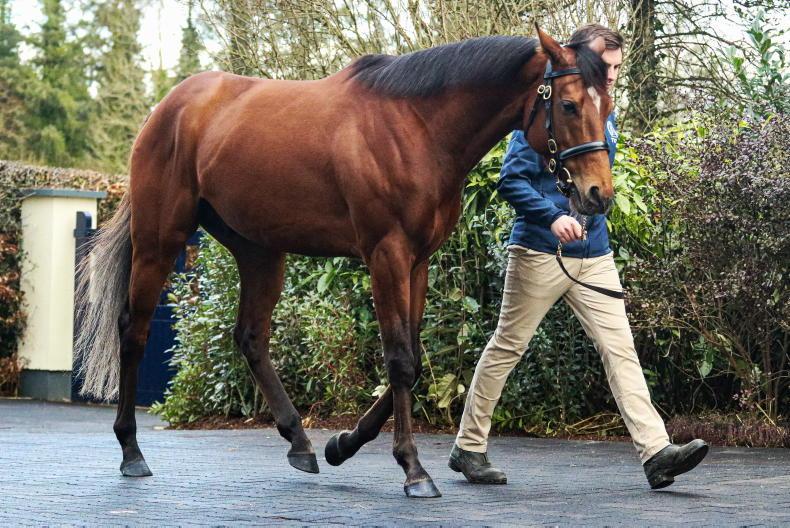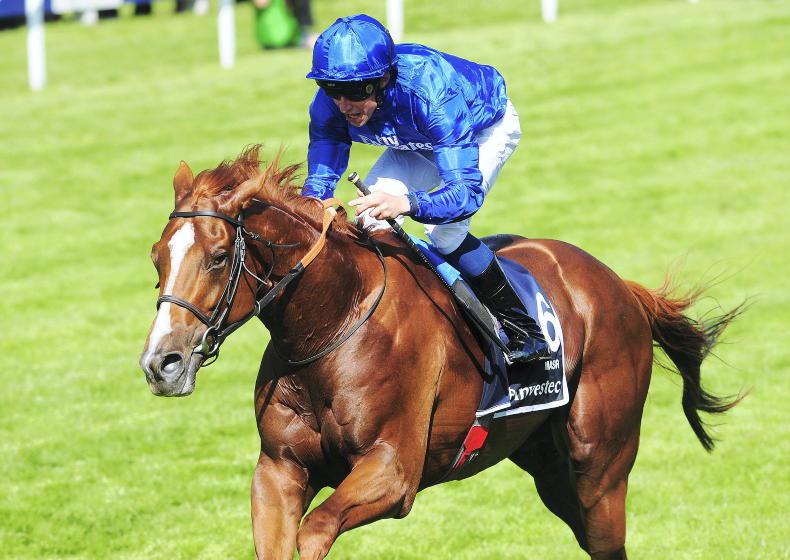I READ with interest the story this week that “former Barcelona starlet Edgar Ié has been accused of sending his twin brother Edelino to play for Dinamo Bucharest in his place”.
The full-brother obviously had talent and it reminds you of the old joke that ‘Elvis had a brother who couldn’t sing a note!’
But in flat racing, more than any other sport, blood and family lines matter. They form the basis of classic breeding and no more so when it comes to winning classics.
Aidan O’Brien still speaks of the Derby as the must-win race for his connections, finding the right colt each season.
“There has to be a barometer and that is the barometer so everything in Dr [Vincent] O’Brien’s time, everything was about winning the Derby,” was one of his comments this week from the Jockey Club pre-Derby media morning.
It takes you back to Vincent’s era and through the rise of Ballydoyle and Coolmore.
And if we are talking about specific bloodlines, it all began with a rather small horse named Northern Dancer and his sons. When the debate continued through this week on how big or not City Of Troy measures up, it was worth remembering where the line all began.
It you were to be swapping siblings, Nijinsky and Sadler’s Wells were paternal half-brothers but you would certainly not send one to replace the other on size or looks. Sadler’s Wells was in the image of his sire. Nijinsky was not. There were many at the time he emerged who thought Nijinsky was indeed too big. Now City Of Troy is too small.
And City Of Troy is also being damned because none of his older brothers were up to the mark. Unbelievable, Absolute Ruler, Military Style and King Of Athens didn’t train on and were poor as three-year-olds.
Following that O’Brien Derby breeding line through to this year’s likely favourite is a strange one. It meanders through many top turf and dirt performers.
Northern Dancer to Storm Bird, into the dirt surface with Storm Cat, to Hennessy, to Johannesburg, to Scat Daddy and then to Justify, sire of City Of Troy. From a Kentucky Derby winner to an Epsom favourite, 60 years later.
City Of Troy shortened again in the Derby market this week after the Dante and the withdrawal of Arabian Crown. Given that the Dante, considered the best Derby trial, failed to deliver a strong contender, we are back to square one and looking over City Of Troy’s shoulder.
The Racing Post online posed a question… Do you think that City Of Troy will bounce back in the Derby?
Answers came in the following order: 1. Yes; 2. No; 3. Too small; 4 He was cooked at 5f in the 2000 Guineas; 5. Aidan is a genius; and finally, typical of online interactions these day, 6. Racing is bent!
There was nothing but positive comments being offered from the Ballydoyle media morning but even with a field lacking strong opposition, I still have doubts this it the right profile for Epsom, especially from a Justify going a mile and a half on turf. But it’s been done before.
And a look back further in time uncovered another great winner who initially had some shortcomings.
Does this sound like the description of a Derby winner?
“He was muscular, a powerfully built chesnut horse...he was short-legged and long-bodied for his height [15.1 hands], and somewhat ewe-necked and straight-shouldered, but had excellent action.” [author and pedigree researcher Avalyn Hunter]
That was the description of Hyperion who became the most successful British-bred sire of the 20th century.
Even if the Derby field is looking low in class, it will still be an intriguing race because of the favourite.
IT would be an interesting poll to see which horse was the most popular.
A dominant Champion Hurdle winner, unbeaten over hurdles in his career so far and rated as possibly one of the best ever, compared to a horse who at his best was beaten by a head and a neck in the Champion Hurdle and the Irish Champion Hurdle and had as much written about his defeats as his wins.
The odds are Harchibald may have beaten Constitution Hill in that one!
Noel Meade’s gelding turned up to the races even if there was never total faith in the expectation of success. The retirement of Grand National winner Coarch Rambler after one disappointing run at Punchestown last month also demonstrated how quickly popular horses are disappearing these times and even horses who may not always win, but really engage with the public over the years, are becoming fewer. Paisley Park was one of the few who saw it out and was still competitive at 12.
It’s not always about winning but in engaging with the punters and fans and horses like Harchibald are the core of the sport.


 This is a subscriber-only article
This is a subscriber-only article
 It looks like you're browsing in private mode
It looks like you're browsing in private mode










SHARING OPTIONS: